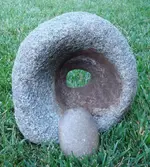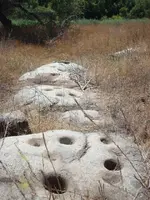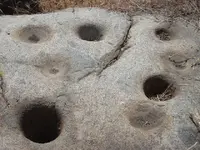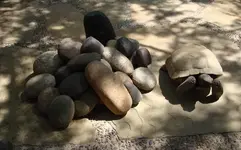blindpig
Sr. Member
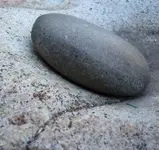
I’m no expert , but I’ll try my best to come off as one here . O.K. to start “Mano” is Spanish for “hand” . The mano [hand-stone] is used on a Metate [Grinding-stone ] . Now I must assume that many if not all Native- American cultures would have found the need at some point the need to grind some grass-seed , nuts , fruit , herbs , minerals even insects [ they did here in California] . So I believe there is a very good chance of finding a mano or a metate where ever you are finding other types of artifacts .
As the Bison was the center of many cultures on the Great Plains , here in California the acorn was the center of many cultures. Now as cultures center around any certain type of activity, there tools related to that activity will become highly refined. As with the large-game hunters ,there atalatal-weights , there fluted laneolates could be called perfect to form .
Now here in California as I stated earlier the center of cultural activity was the acorn . The harvesting , the preparation to a palatable meal, and even the storage of the acorn has led to some highly refined tools/ artifacts in the form of Olla’s [pottery vessel’s] , some of the most beautiful water-tight basketry in are nation, even the lowly mano has been transformed into a fine -lined hard-stone tool , good form will always fallow function...
I suppose most mano’s started life out like most other hard-stone tools , as water-worn cobbles. Why a particular cobble was chosen , color , shape, durability or just availability, most likely a factor of all . Now I don’t believe that much work , if any was done to these cobbles before they where used as a mano , but there are always exceptions . In support of this idea, I’ve found many mano’s in various “stages”of use/wear .
I don’t believe you should compare /gage mano’s from other cultures or area’s to mine for two reasons . One; My collection is /was highly selective for shape and polish . Two; These Californian [Luiseno/Diegueno] mano’s are a bit of a “Hybrid” , that is in there use/ form they have pestle type traits . With that said , the metate’s used with these hybrid mano’s would be considered, by many a mortar. I don’t want to digress into a mortar/pestle thing , so best to refer to the pic.’s , better seen then explained ... I also realize I haven’t helped you to recognize a more typical mano ... the pic’s will help with this as well.
Now, I must admit here, that I didn’t always appreciate the mano for what it was. As it belonged in a ancient kitchen , not in the hand of some warrior of the past, I didn’t find them “Es Moy Matcho”.... * But in reality, in California* it was the tool that feed an ancient culture ,.. And deserves a bit of respect..
*But in reality , in California *an Oxymoron , if taken out of given text...
Blindpig
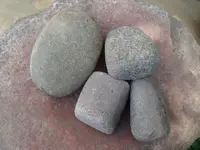
A variety of mano's , some expert has even typed them , Oval , Bell and Cubic the bottom right ? A narrow bell , ..or a four-sided pestle? Other terms often used in mano description are unifacial , bifacial and even trifacial, ...I don't believe I have any of those .
Note; The red mineral on the metate , an iron min. ? or possibly Cinibar , very bright red ?
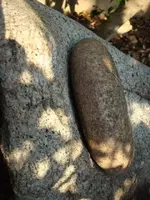
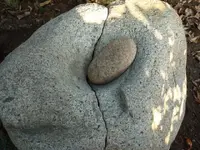
Trying to show how deep and narrow some Californian metates / morters are , and the pestle traits of some mano's
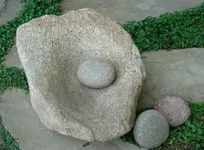
Maybe a more "typical" metate , In general I would say this type [in fact this one ] wuold come from a transitinal [>1600 B.P. ] site . The mano's usually associated are unifacial .
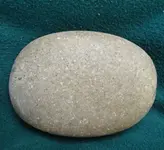

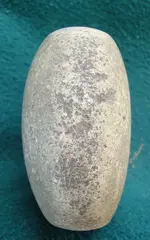
The quintessential of Californian mano's, ....The lines are as good as any axe ......Well, almost !
There you go , I believe I've done a fine job playing up the mano , and at the same time not really helping anyone . So ,... I suppose I did a fair job ..........coming off like an expert, that is!
Sincerely; Blindpig
Amazon Forum Fav 👍
Upvote
0



